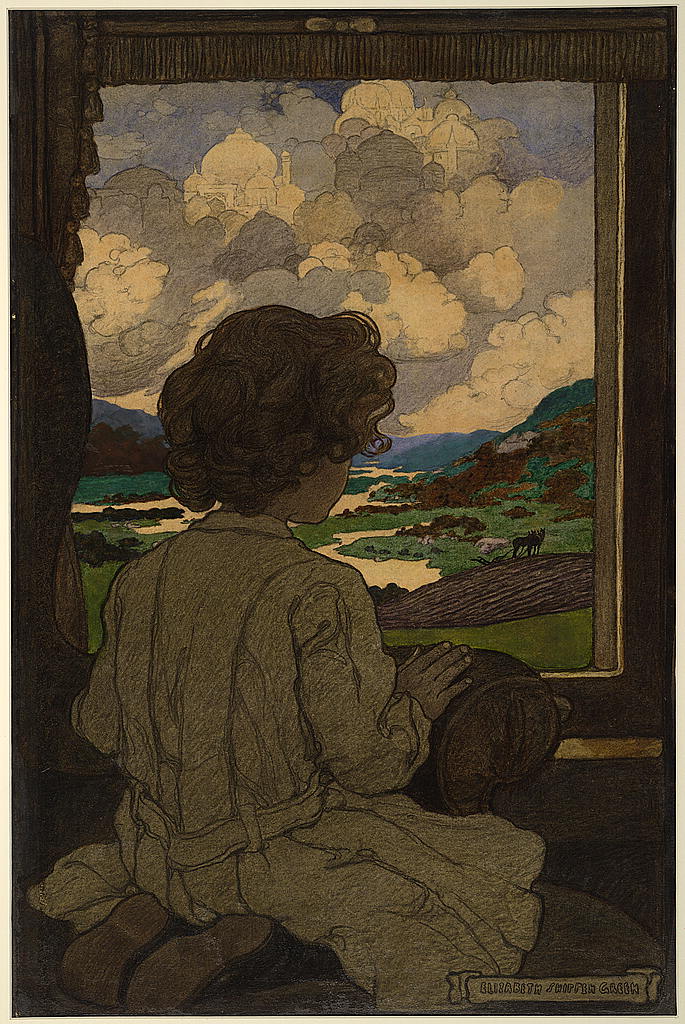The Journey
By Josephine Preston Peabody
Annotations by Rene Marzuk

Never saw the hills so far And blue, the way the pictures are; And flowers, flowers growing thick, But not a one for me to pick! The land was running from the train, All blurry through the window-pane. And then it all looked flat and still, When up there jumped a little hill! I saw the windows and the spires, And sparrows sitting on the wires; And fences, running up and down; And then we cut straight through a town. I saw a Valley, like a cup; And ponds that twinkled, and dried up. I counted meadows, that were burnt; And there were trees,—and then there weren't! We crossed the bridges with a roar, Then hummed, the way we went before. And tunnels made it dark and light Like open-work of day and night. Until I saw the chimneys rise, And lights and lights and lights, like eyes. And when they took me through the door, I heard it all begin to roar.— I thought—as far as I could see— That everybody wanted Me!
Peabody, Josephine Preston. “The Journey,” in The Book of the Little Past, 8-9. Boston and New York: Houghton Mifflin Company, 1908.
Contexts
Josephine Preston Peabody’s The Book of the Little Past (1908), illustrated by Elizabeth Shippen Green, gathered previously published and unpublished poems in which the author touched upon various subjects from a child’s perspective. A favorable 1908 review from The Bellman, a Minneapolis literary magazine, asserted that the volume would be “read and remembered and quoted as few poems of children are,” and referred to Peabody as “one of the first of American lyric poets.”
The speaker from “The Journey” takes readers along on a scenic train route. Trains were a popular means of transportation in the United States at the beginning of the twentieth century, although leisure travel remained a luxury. According to the Library of Congress, railroad construction accelerated in the 1870s (after the Civil War), and, by 1900 “much of the nation’s railroad system was in place.”
Definitions from Oxford English Dictionary:
spire: A tall structure rising from a tower, roof, etc., and terminating in a slender point; esp. the tapering portion of the steeple of a cathedral or church, usually carried to a great height and constituting one of the chief architectural features of the building.
Resources for Further Study
- “Railroads in the Late 19th Century,” in the Library of Congress website.
- The railroad construction boom brought with it fierce competition between railroad tycoons seeking to expand their lines. With the Interstate Commerce Act of 1887, Congress acted against railroad monopolies and “railroads became the first industry subject to Federal regulation.”
- Smithsonian Magazine article on the Pullman porters, African-American men employed by the Pullman Company, a railroad manufacturer and operator. The Pullman porters, who assisted wealthy (white) travelers in the company’s sleeper cars, became synonymous with luxury train travel since the late 1860s and until 1968. The Brotherhood of Sleeping Car Porters, which they founded in 1925, became “the first African-American labor union to succeed in brokering a collective bargaining agreement with a major corporation.”
Contemporary Connections
“What Travel Looked Like Through the Decades,” in Travel + Leisure magazine.